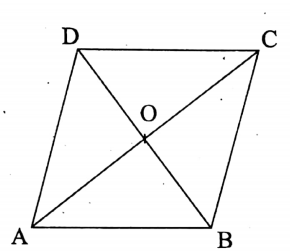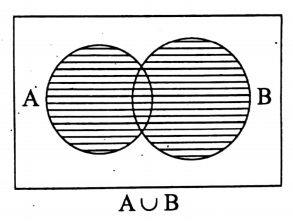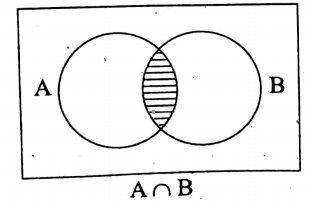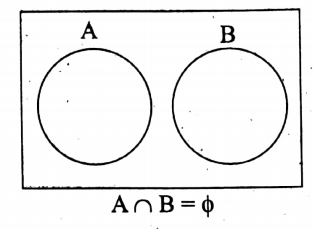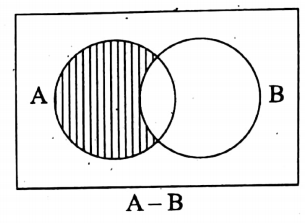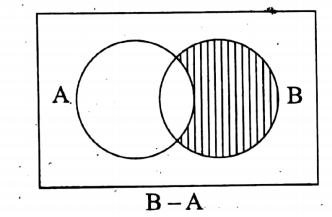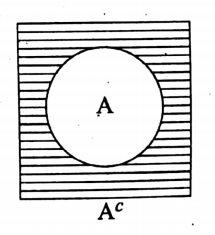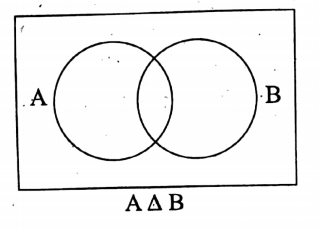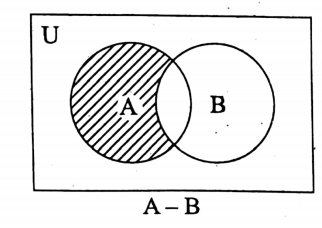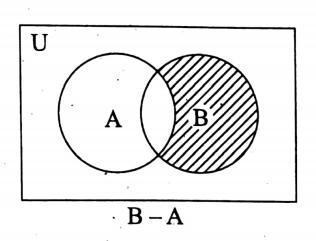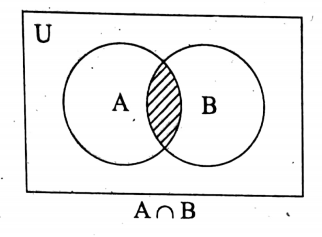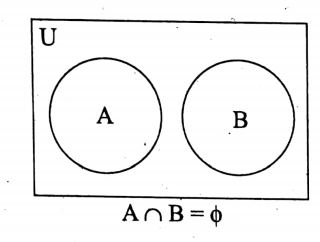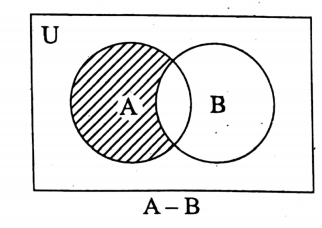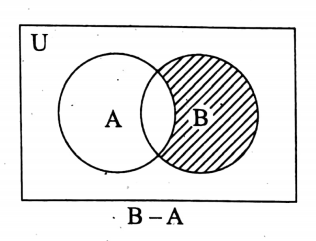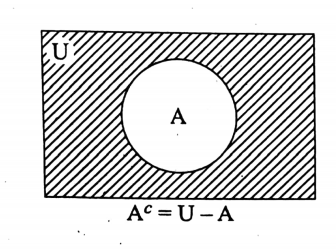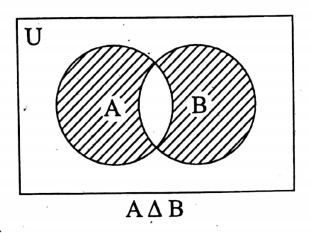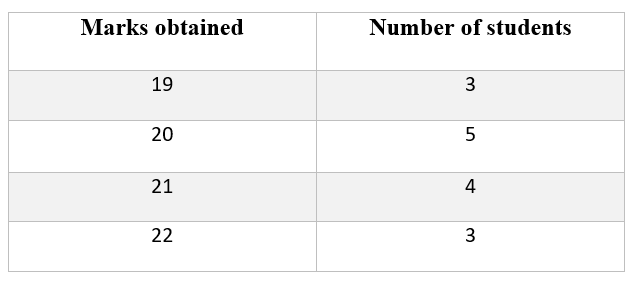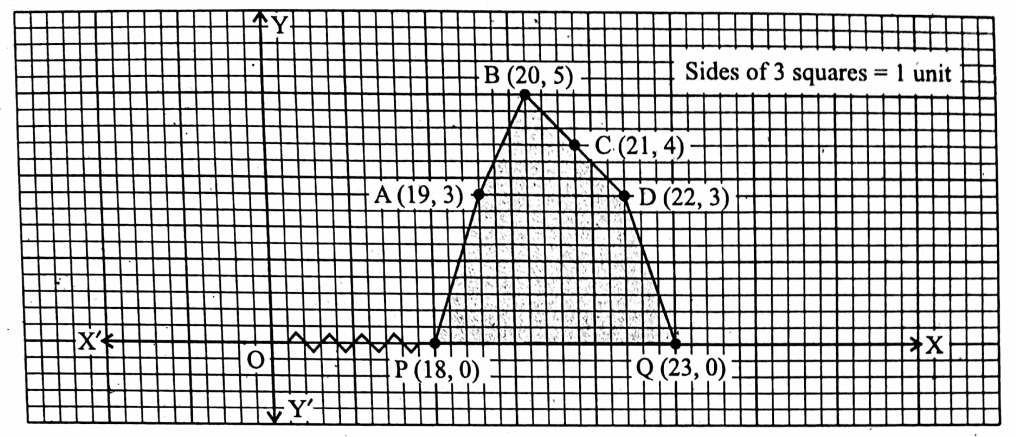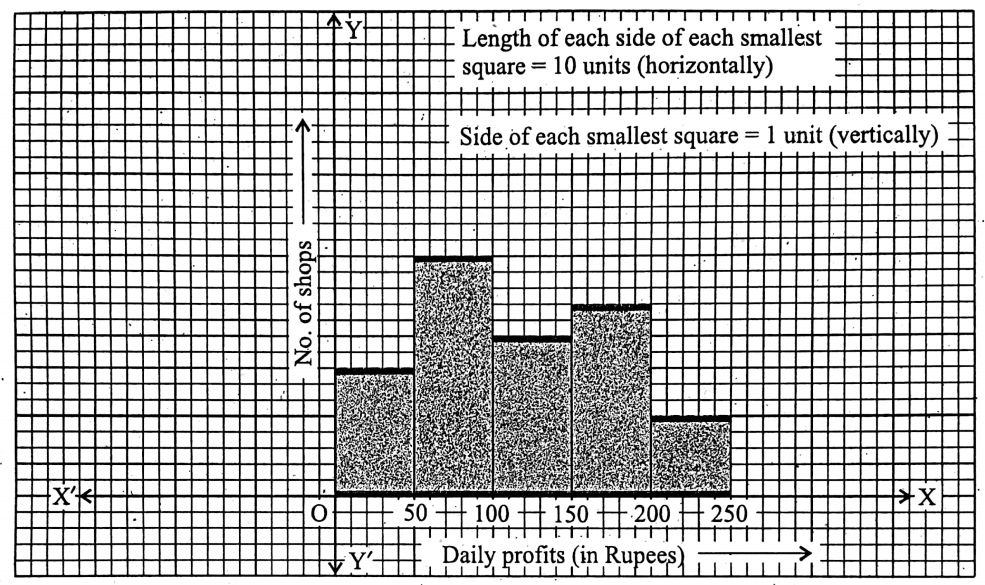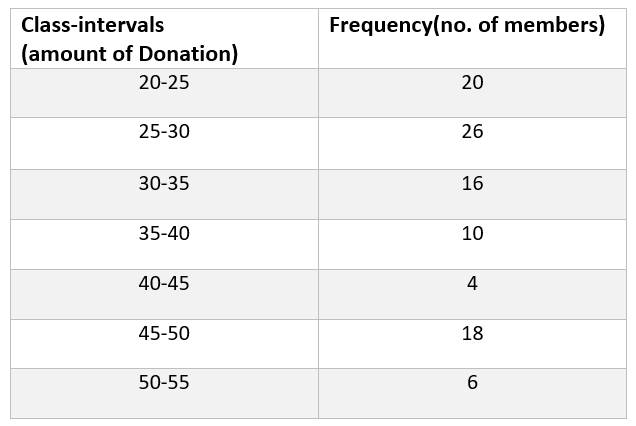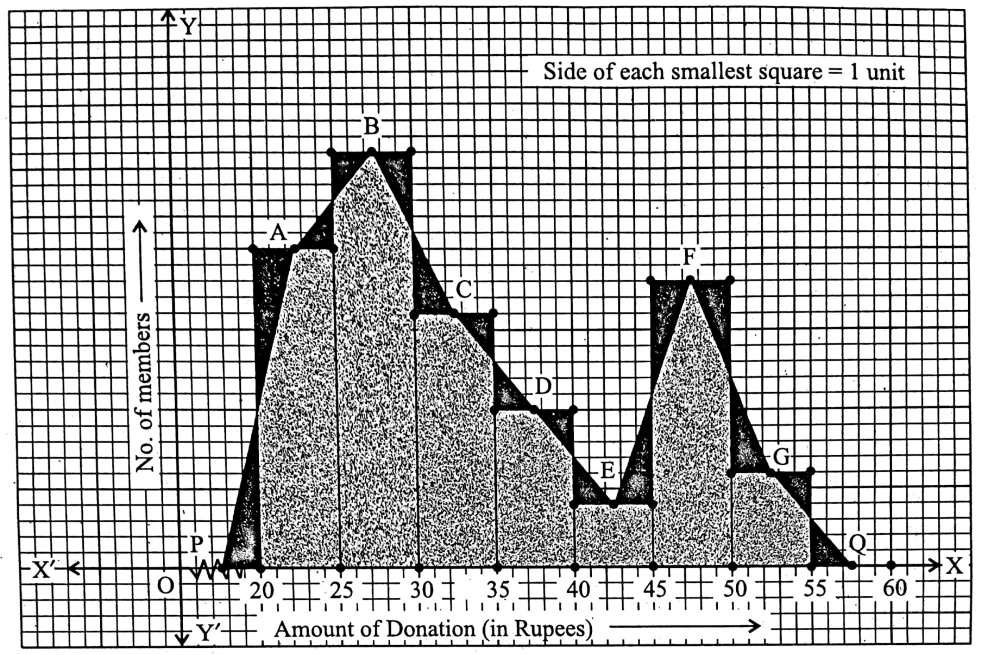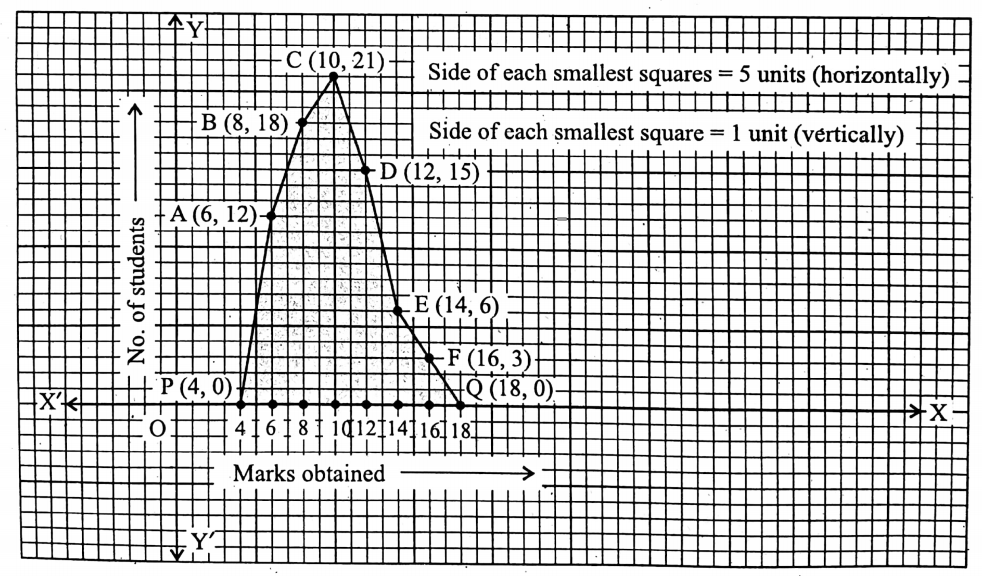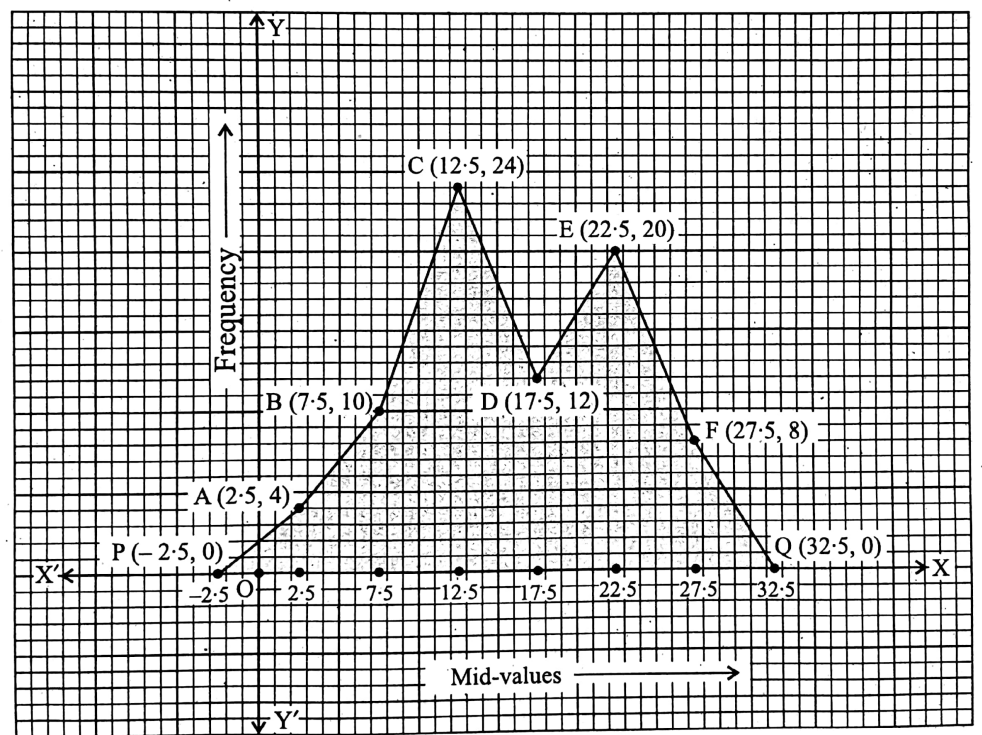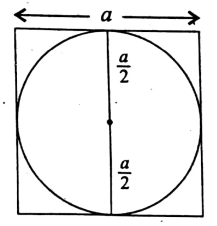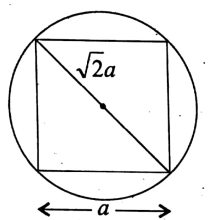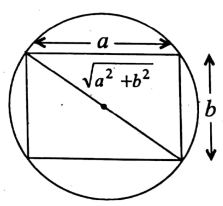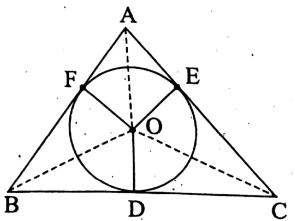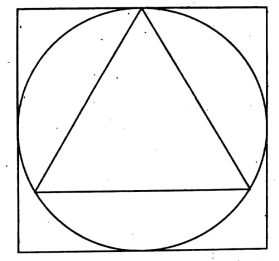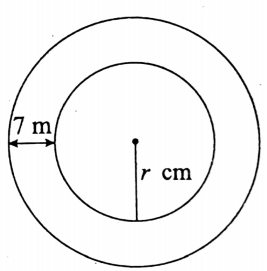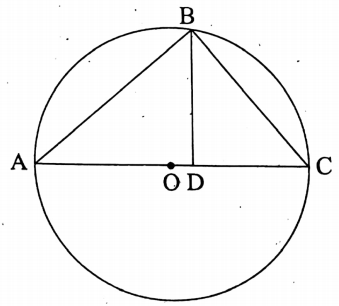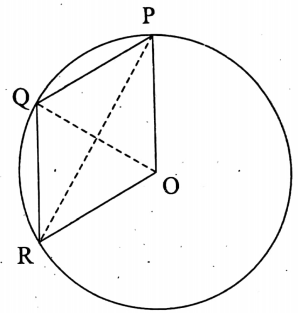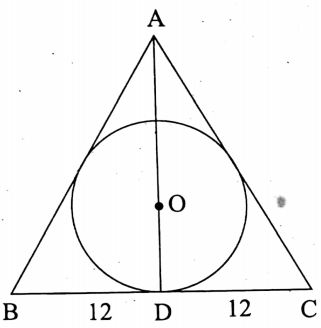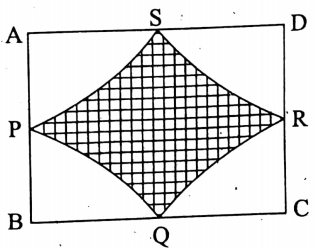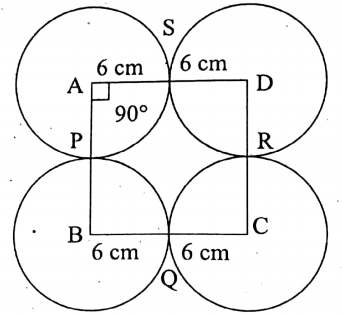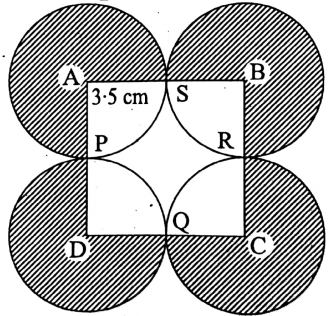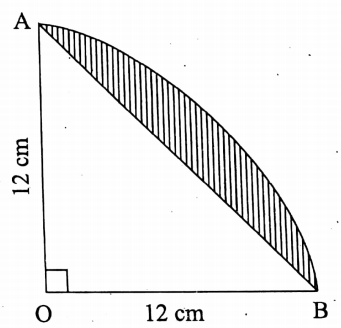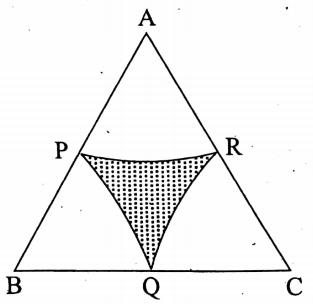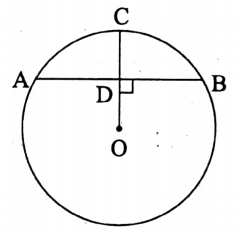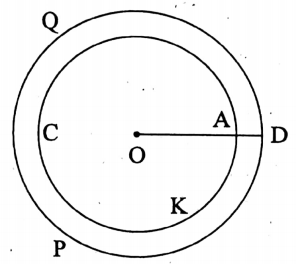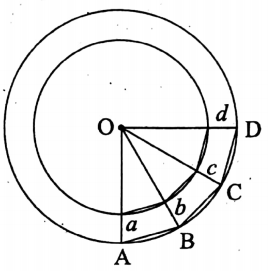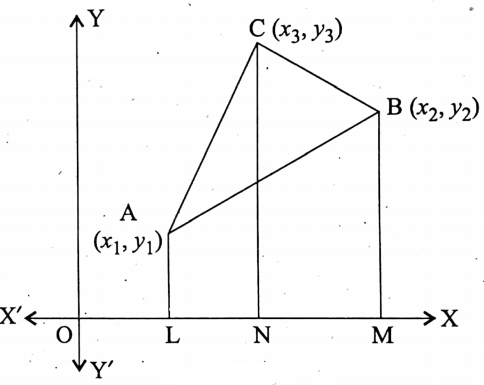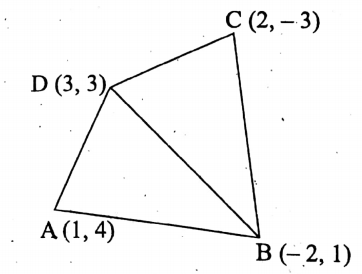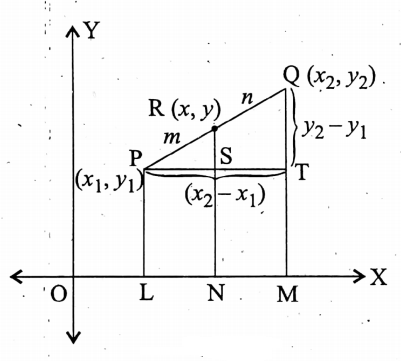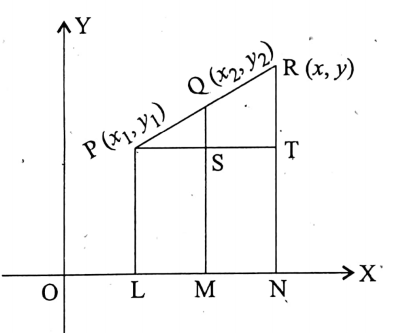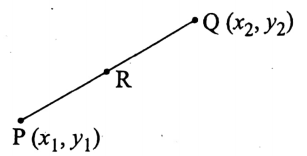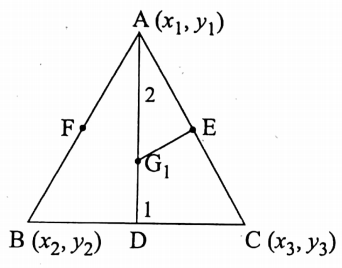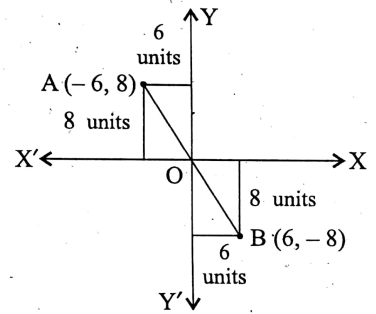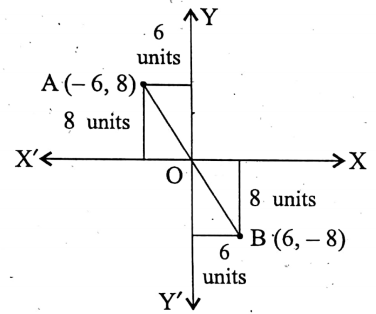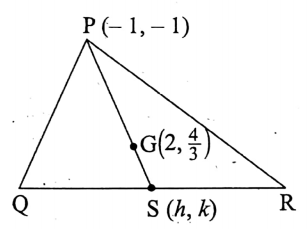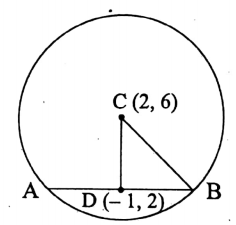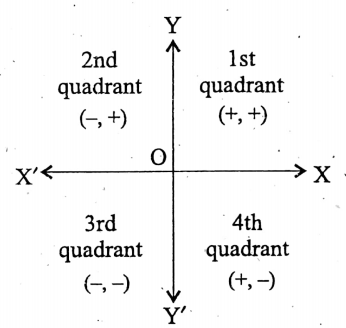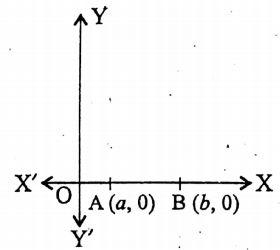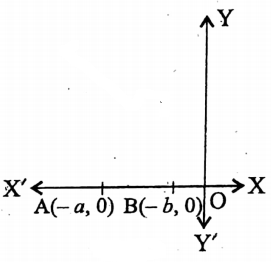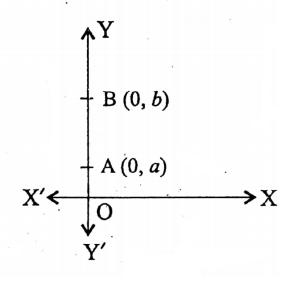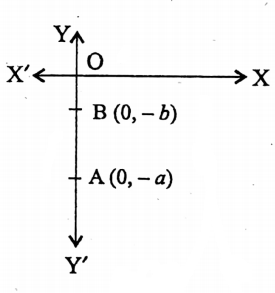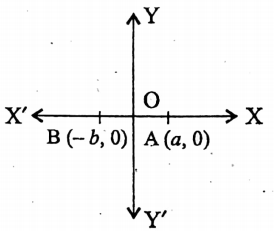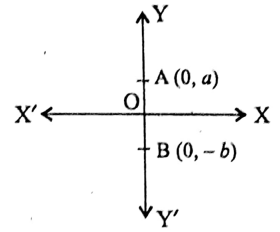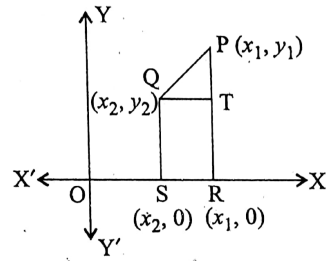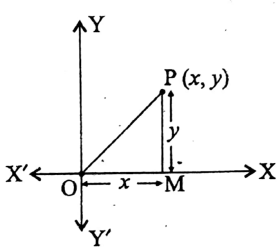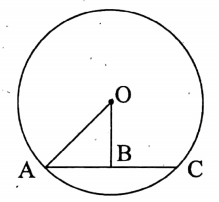WBBSE Solutions For Class 9 Maths Mensuration Chapter 1 Perimeter And Area Of Triangles And Quadrilaterals
WBBSE Class 9 Perimeter and Area Overview
Chapter 1 Perimeter And Area Of Triangles And Quadrilaterals Triangle
1. Definition of Triangle:
The plane area closed by three straight lines is called a triangle. In the following figure.
ABC is a triangle, the vertices of which are A, B, and C, the sides are AB, BC, and CA and the angles are ∠ABC, ∠BCA, and ∠BAC
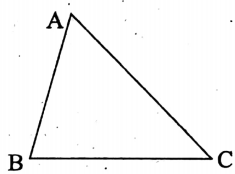
2. Height of a triangle:
The perpendicular drawn from any of the vertices of a triangle to its opposite side or to its produced opposite side is called the height of the triangle.
Such as, a perpendicular AD is drawn from the vertex A to its opposite side BC.
Read and Learn More WBBSE Solutions For Class 9 Maths
Similarly, a perpendicular DG is drawn from the vertex D to its produced opposite side EF
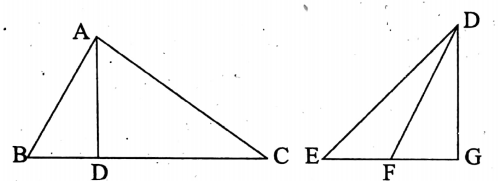

3. Base of a triangle:
The side of the triangle to which the perpendicular is drawn from the opposite vertex is called the base of the triangle with respect to that perpendicular.
Such as BC is the base of the ΔABC with respect to the perpendicular AD, and in ΔDEF, EF is the base with respect to the perpendicular DG.
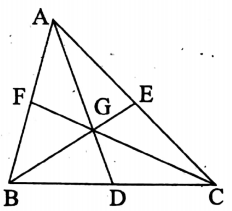
4. Median of a triangle:
The line segments obtained by joining any vertex of a triangle to the mid-point of its opposite side are called the median of the triangle.
Such as, the medians of theΔABC are AD, BE, and CF B Clearly, the medians are concurrent.
Here, the three medians coincide at G.
5. Perimeter of a triangle:
The sum of the lengths of the three sides of a triangle is called its perimeter.
In the perimeter of the ΔABC = AB + BC + CA.
6. Area of a triangle:
The triangle including its internal plane area is called the area of the triangle.
7. Types of triangles:
With respect to sides, triangles are of three types.
Namely, equilateral triangle, isosceles triangle, and scalene triangle.
Again, with respect to angles, triangles are also of three types.
Namely, acute-angled triangle, obtuse-angled triangle, and right-angled triangle.
You have already studied more of it in your previous classes.
8. Formula to find the area of a triangle:
Let the base of the ΔABC be AB and its height be CF.
We have to find the area of this triangle ABC.
Let us draw a rectangle ABDE with base AB such that the ΔABC and the rectangle ABDE lie within the same parallels.
Now, the ΔABC and the  ABDE have the same base AB and within the same parallels AB and DE
ABDE have the same base AB and within the same parallels AB and DE
∴ area of ΔABC = \(\frac{1}{2}\) x area of  ABDE
ABDE
∴ area of ΔABC = \(\frac{1}{2}\) x AB x DB = \(\frac{1}{2}\) × AB x CF.
∴ area of any triangle = \(\frac{1}{2}\) x base x height.
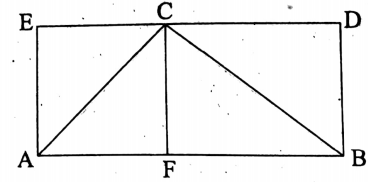
Formulas for Area of Triangles
9. Area of an equilateral triangle:
Let the length of each side of an equilateral triangle be ‘a’ units, i.e., AB = BC = CA = units.
Let AD is perpendicular drawn from.
A to the base BC.
Since, the perpendicular, drawn from any vertex of an equilateral triangle to its opposite side, bisects the opposite side,
∴ BD = DC = units
Now, in a right-angled triangle ABD, AD is perpendicular, BD is the base and AB is the hypotenuse.
∴ AD² = AB² – BD² [ by Pythagoras theorem ]
= \(=a^2-\left(\frac{a}{2}\right)^2=a^2-\frac{a^2}{4}=\frac{3 a^2}{4} \Rightarrow \mathrm{AD}=\frac{\sqrt{3} a}{2}\)
Height of an equilateral triangle of side a unit \(\frac{\sqrt{3}}{2}\) x (length of each equal side)
Area of an equilateral triangle = \(\frac{1}{2}\) x BC x AD
= \(\frac{1}{2} \times a \times \frac{\sqrt{3}}{2} a \text { sq-units }=\frac{\sqrt{3}}{4} a^2 \text { sq-units. }\)
∴ Area of an equilateral triangle = \(\frac{\sqrt{3}}{4} \times(\text { side })^2\)
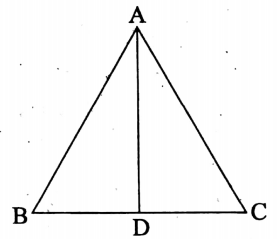
10. Area of an isosceles triangle:
Let the lengths of each of the equal sides AB and AC of the triangle ABC be a unit and the length of its base be b units.
Let us draw perpendicular AD from A to BC.
Since we know that the perpendicular drawn from the vertex of an isosceles triangle to its unequal side bisects the b unequal side,
∴ BD=DC= \(\frac{b}{2}\) units.
Now, in the right-angled triangle ABD, AD is perpendicular, BD is the base and AB is the hypotenuse.
∴ AD² = AB² – BD² [ by Pythagoras theorem]
= \(a^2-\left(\frac{b}{2}\right)^2=a^2-\frac{b^2}{4}\)
∴ \(\mathrm{AD}=\sqrt{a^2-\frac{b^2}{4}}\)
Area of the ΔABC = \(\frac{1}{2} \times \mathrm{BC} \times \mathrm{AD}=\frac{1}{2} \times b \sqrt{a^2-\frac{b^2}{4}} \text { sq-units }\)
∴ Area of an isosceles triangle = \(\frac{1}{2} \times \text { base } \times \sqrt{(\text { equal side })^2-\left(\frac{\text { unequal side }}{2}\right)^2}\)
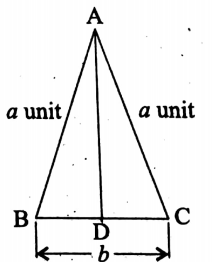
11. Area of a Scalene triangle:
Let the sides of a scalene triangle ABC be a, b, c.
Now, if s be the half-perimeter of ABC, then s = \(\frac{a+b+c}{2}\)
Let us draw perpendicular AD from A to BC.
Let BD = x units and AD = h DC= ax units
∴ Area of \(\Delta \mathrm{ABC}=\frac{1}{2} \mathrm{BC} \times \mathrm{AD}=\frac{1}{2} a h\)
From the right-angled triangle ABD, we get,
\(\mathrm{AD}^2=\mathrm{AB}^2-\mathrm{BD}^2 \Rightarrow h^2=c^2-x^2\)……………(1)
and from right-angled triangle ADC, we get,
\(\mathrm{AD}^2=\mathrm{AC}^2-\mathrm{DC}^2 \Rightarrow h^2=b^2-(a-x)^2\)…………….(2)
∴ \(b^2-(a-x)^2=c^2-x^2[\text { by (1) and (2) ] }\)
\(b^2-a^2-x^2+2 a x=c^2-x^2 \Rightarrow 2 a x=a^2-b^2+c^2 \Rightarrow x=\frac{a^2-b^2+c^2}{2 a}\)
∴ \(h^2=c^2-x^2=c^2-\left(\frac{a^2-b^2+c^2}{2 a}\right)^2=c^2-\frac{\left(a^2-b^2+c^2\right)^2}{4 a^2}=\frac{4 a^2 c^2-\left(a^2-b^2+c^2\right)^2}{4 a^2}\)
= \(\frac{\left(2 a c+a^2+c^2-b^2\right)\left(2 a c-a^2+b^2-c^2\right)}{4 a^2}\)
= \(\frac{\left\{(a+c)^2-b^2\right\}\left\{b^2-(a-c)^2\right\}}{4 a^2}\)
= \(\frac{(a+b+c)(a+c-b)(a+b-c)(b+c-a)}{4 a^2}\)
=\(\frac{(a+b+c)(a+b+c-2 b)(a+b+c-2 c)(a+b+c-2 a)}{4 a^2}\)
= \(\frac{2 s(2 s-2 b)(2 s-2 c)(2 s-2 a)}{4 a^2}=\frac{4 s(s-a)(s-b)(s-c)}{a^2}\)
\(\Rightarrow h=\frac{2}{a} \sqrt{s(s-a)(s-b)(s-c)}\)
∴ Area of a scalene triangle of sides a,b and c
= \(\frac{1}{2} \times \mathrm{BC} \times \mathrm{AD}=\frac{1}{2} \times a \times \frac{2 \sqrt{s(s-a)(s-b)(s-c)}}{a}=\sqrt{s(s-a)(s-b)(s-c)}\)
∴ Area of a scalene triangle = \(\sqrt{s(s-a)(s-b)(s-c)}, \text { where } s=\frac{a+b+c}{2}\) and a, b, c are sides.
12. Area of a right-angled triangle:
Let in the right-angled triangle ABC, ∠ABC = 90° and
the length of its adjacent sides of the right angle, i.e., of AB and AC are a units and b units respectively
∴ area of ΔABC = \(\frac{1}{2}\) x base x height
= \(\frac{1}{2}\) x b x a sq-units
= \(\frac{1}{2}\) ab sq-units
∴ Area of a right-angled triangle = \(\frac{1}{2}\) x (product of the lengths of the two adjacent sides of the right angle).
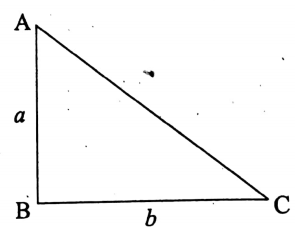
Chapter 1 Perimeter And Area Of Triangles And Quadrilaterals Select The Correct Answer (MCQ)
Question 1. The lengths of each of the equal sides of an isosceles right-angled triangle be a unit, then its perimeter is
- (1+√2) a units
- (2+√2) a units
- 3a units
- (3+2√2) a units
Solution:
Here, the length of each of the bases and the perpendicular of the isosceles right-angled triangle is a unit.
∴ hypotenuse = \(\sqrt{a^2+a^2} \text { units }=\sqrt{2 a^2} \text { units }=\sqrt{2} a \text { units }\)
∴ perimeter of the triangle = \(a+a+\sqrt{2} a=2 a+\sqrt{2} a=(2+\sqrt{2}) a \text { units. }\)
Question 2. If the area, perimeter, and height of an equilateral triangle be A, s, and h respectively, then the value of \(\frac{2 A}{s h}\) is
- 1
- 1/2
- 1/3
- 1/4
Solution
Let the length of the side of the equilateral triangle be x units.
area A = \(\mathrm{A}=\frac{\sqrt{3}}{4} x^2\) sq-units, perimeter s = 3x units and height h = \(h=\frac{\sqrt{3}}{2} x\)
∴ \(\frac{2 \mathrm{~A}}{s h}=\frac{2 \cdot \frac{\sqrt{3}}{4} x^2}{3 x \cdot \frac{\sqrt{3}}{2} x}=\frac{1}{3}\)
Question 3. D is a point on AC of ΔABC such that AD: DC = 3: 2; If the area of the ΔABC is 40 sq- cm, then the area of the ABDC is
- 16 sq-cm
- 24 sq-cm
- 30 sq-cm
- 36 sq-cm
Solution :
AD: DC = 3:2
\(\Rightarrow \frac{\mathrm{AD}}{\mathrm{DC}}=\frac{3}{2} \Rightarrow \frac{\mathrm{AD}}{\mathrm{DC}}+1=\frac{3}{2}+1\)
\(\Rightarrow \frac{\mathrm{AD}+\mathrm{DC}}{\mathrm{DC}}=\frac{5}{2} \Rightarrow \frac{\mathrm{AC}}{\mathrm{DC}}=\frac{5}{2}\)………….(1)
Let BE be the length of the perpendicular drawn from B to AC.
∴ area of the ΔABC = \(\frac{1}{2}\) AC x BE [ ∵ BE = height]
and area of the ΔBDC = \(\frac{1}{2}\) CD x BE
∴ \(\frac{\Delta \mathrm{BDC}}{\Delta \mathrm{ABC}}=\frac{\frac{1}{2} \times \mathrm{CD} \times \mathrm{BE}}{\frac{1}{2} \times \mathrm{AC} \times \mathrm{BE}}=\frac{\mathrm{DC}}{\mathrm{AC}}=\frac{5}{2}[\text { by (1) }]\)
∴ area of ΔBDC = \(\frac{2}{5}\) x (area of ΔABC)
= \(\frac{2}{5}\) × 40 sq-cm = 16 sq-cm
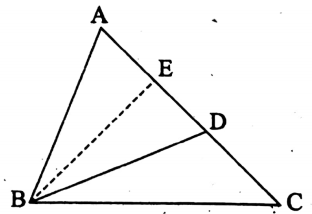
The area of the ABDC is = 16 sq-cm.
Question 4. If the differences between each of the sides of a triangle from its half-perimeter be 8 cm, 7 cm, and 5 cm, then the area of the triangle is
- 20√7 sq-cm
- 10√14 sq-cm
- 20√14 sq-cm
- 140 sq-cm
Solution:
Let the half-perimeter of the triangle be s cm and the sides of the triangle be a cm, b cm, and c cm.,
As per question, s-a=8; s-b= 7; s-c = 5
∴ (s-a)+(s-b)+(s-c) = 20
⇒ 3s-(a+b+c) = 20
⇒ 3s-2s=20
⇒s=20
∴ the area of the triangle = \(\sqrt{20 \times 8 \times 7 \times 5} \mathrm{sq}-\mathrm{cm}=20 \sqrt{14} \mathrm{sq}-\mathrm{cm}\)
Chapter 1 Perimeter And Area Of Triangles Short Answer Type Questions
Perimeter Calculation Examples for Triangles
Question 1. The numerical value of the area and the height of an equilateral triangle are equal. Find the length of the side of the triangle.
Solution:
Given
The numerical value of the area and the height of an equilateral triangle are equal
Let the length of the side of the triangle be x units.
∴ area = \(\frac{\sqrt{3}}{4} x^2\) sq-units and height = \(\frac{\sqrt{3}}{2} x\)
As per the question, \(\frac{\sqrt{3}}{4} x^2=\frac{\sqrt{3}}{2} x \Rightarrow x=2 \text { units }\)
∴ the length of the sides of the triangle is 2 units.
Question 2. If the lengths of the sides of a triangle be doubled, then what percentage of its area will be increased?
Solution:
Given
The lengths of the sides of a triangle be doubled
Let the sides of the triangle be units, b units, c units, half-perimeter s units, and area A sq-units.
A= \(\sqrt{s(s-a)(s-b)(s-c)} \text { sq-units, where } s=\frac{a+b+c}{2}\)
If the sides of the triangle be doubled, let its area will be A, sq-units, and perimeter be 2s, units.
∴ \(2 s_1=2 a+2 b+2 c \quad \text { or; } \quad s_1=a+b+c=2 s\)……………..(1)
∴ \(\mathrm{A}_1=\sqrt{s_1\left(s_1-2 a\right)\left(s_1-2 b\right)\left(s_1-2 c\right)}=\sqrt{2 s(2 s-2 a)(2 s-2 b)(2 s-2 c)} \text { [ by (1) ] }\)
= \(4 \sqrt{s(s-a)(s-b)(s-c)}=4 \mathrm{~A}\)
∴ percentage of increased area = \(\frac{3 \mathrm{~A}}{\mathrm{~A}} \times 100 \%=300 \%\)
∴ the required increment of the percentage of area is 300%.
Understanding the Relationship Between Perimeter and Area
Question 3. If the sides of a right-angled triangle be (x-2) cm, x cm, and (x + 2) cm, then what is the length of its hypotenuse?
Solution:
Given
The sides of a right-angled triangle be (x-2) cm, x cm, and (x + 2) cm
Here, the length of the greatest side is (x + 2) cm.
length of the hypotenuse is (x+2) cm.
Now, by Pythagoras’ theorem, x² + (x-2)² = (x+2)² [x cm and (x – 2) cm are one of the perpendicular or base ]
or, x²+x²+4 – 4x = x² + 4 + 4x
⇒ x²-8x=0
⇒ x(x-8)= 0.
∴ either x = 0 (which is impossible) or, x-8=0
⇒ x=8.
∴ the required length of the hypotenuse = (8 + 2) cm
= 10 cm.
length of its hypotenuse = 10 cm.
Question 4. If a square is drawn on the height of an equilateral triangle, then what will be the ratio between the areas of the triangle and the square?
Solution:
Given
A square is drawn on the height of an equilateral triangle
Let the side of the equilateral triangle be x units.
Height = \(\frac{\sqrt{3}}{2} x \text { units and area }=\frac{\sqrt{3}}{4} x^2 \text { sq-units }\)
∴ side of the square = \(\frac{\sqrt{3}}{2} x\) units (as per question)
∴ area of the square = \(\left(\frac{\sqrt{3}}{2} x\right)^2 \text { sq-units }=\frac{3}{4} x^2 \text { sq-units }\)
∴ area of the triangle: area of the square = \(\frac{\sqrt{3}}{4} x^2: \frac{3}{4} x^2=\frac{\frac{\sqrt{3}}{4} x^2}{\frac{3}{4} x^2}=\frac{1}{\sqrt{3}}=1: \sqrt{3}\)
the required ratio=1: √3.
Chapter 1 Perimeter And Area Of Triangles Long Answer Type Questions
Question 1. If the height of a triangle is decreased by 40% and its base is increased by 40%, then what change in its area will be performed?
Solution:
Given
The height of a triangle is decreased by 40% and its base is increased by 40%
Let the base of the triangle be x units, height be y units and area be A sq-units.
∴ \(\mathrm{A}=\frac{1}{2} x y\)
Now, the increased base = \(\left(x+x \times \frac{40}{100}\right) \text { units }=\left(x+\frac{2 x}{5}\right) \text { units }=\frac{7 x}{5} \text { units }\)
and the decreased height = \(\left(y-y \times \frac{40}{100}\right) \text { units }=\left(y-\frac{2 y}{5}\right) \text { units }=\frac{3 y}{4} \text { units }\)
Then, the area of the triangle = \(\frac{1}{2} \times \frac{7 \dot{x}}{5} \times \frac{3 y}{5} \text { sq-units }=\frac{21 x y}{50} \text { sq-units }\)
∴ the area will be decreased by = \(\left(\frac{1}{2} x y-\frac{21 x y}{50}\right) \text { sq-units }=\frac{2 x y}{25} \text { sq-units }\)
∴ the required percentage of decreased area = \(\frac{\frac{2 x y}{25}}{\frac{1}{2} x y} \times 100 \%=16 \%\)
Question 2. The perimeter of an isosceles triangle is 544 cm. The length of each equal side is \(\frac{5}{6}\) part of its base. Find the area of the triangle.
Solution:
Given
The perimeter of an isosceles triangle is 544 cm. The length of each equal side is \(\frac{5}{6}\) part of its base
Let the length of the base = x cm
∴ length of each of its equal sides= \(\frac{5}{6}\)x cm
Since, the perimeter = 544 cm,
∴ \(x+\frac{5 x}{6}+\frac{5 x}{6}=544 \Rightarrow \frac{6 x+5 x+5 x}{6}=544\)
\(\Rightarrow \frac{16 x}{6}=544 \quad \Rightarrow x=544 \times \frac{6}{16}=204\)
∴ length of the base 204 cm and the length of each equal side = \(\frac{5}{6}\) x 204 cm
= 170 cm.
∴area of the triangle = \(\frac{1}{2} \times 204 \sqrt{(170)^2-\left(\frac{204}{2}\right)^2} \text { sq-cm }\)
= \(\frac{1}{2} \times 204 \sqrt{272 \times 668} \mathrm{sq}-\mathrm{cm}\)
= \(\frac{1}{2} \times 204 \times \sqrt{17 \times 16 \times 4 \times 17} \cdot \mathrm{sq}-\mathrm{cm}\)
= \(\frac{1}{2} \times 204 \times 17 \times 2 \times 4 \mathrm{sq}-\mathrm{cm}=13872 \mathrm{sq}-\mathrm{cm}\)
∴ the area of the triangle is 13872 sq-cm.
Real-Life Applications of Area and Perimeter
Question 3. If the length of the hypotenuse of a right-angled isosceles triangle is 12√2 cm, then find its area.
Solution:
Given
The length of the hypotenuse of a right-angled isosceles triangle is 12√2 cm
Let the length of the two equal sides of the right-angled triangle adjacent to the right angle be a cm.
∴ (hypotenuse)² = a²+2 = 2a² ∴ hypotenuse = √2a cm.
As per the question, a√2 = 12√2
⇒ a = 12
∴ area of the triangle =\(\frac{1}{2}\) base x height = \(\frac{1}{2}\) x 12 × 12 sq-cm
= 72 sq-cm
∴ the required area of the triangle = 72 sq-cm.
Question 4. The ratio of the sides of a triangular park is 2: 3: 4. If the perimeter of the park is 216 m, then find the distance (perpendicular) of the greatest side of the park from its opposite vertex.
Solution:
Given
The ratio of the sides of a triangular park is 2: 3: 4
The perimeter of the park is 216 m
Let the sides of the park be 2x m, 3x m, and 4x m.
The perimeter of the park is 216 m.
∴ 2x+3x+4x = 216
or, 9x = 216
⇒ x = \(\frac{216}{24}\)
∴ The length of the sides of the park is (2 x 24) m = 48 m, (3 x 24) m = 72 m, and (4 x 24) m = 96 m.
∴ half-perimeter of the park = \(\frac{216}{2}\)m = 108m
∴ area of the park = \(\sqrt{108(108-48)(108-72)(108-96)} \text { sq-m }\)
= \(\sqrt{108 \times 60 \times 36 \times 12} \text { sq-m }\)
= \(\sqrt{12 \times 9 \times 12 \times 5 \times 6 \times 6 \times 4 \times 3} \mathrm{sq}-\mathrm{cm}\)
= 12 x 3 x 6 x 2√15 sq.cm
= 432√15 sq.cm
Let the required perpendicular distance be x m.
∴ \(\frac{1}{2} \times 96 \times x=432 \sqrt{15} \Rightarrow x=\frac{432 \sqrt{15}}{48}=9 \sqrt{15}\)
∴ The required perpendicular distance = 9√15 m.
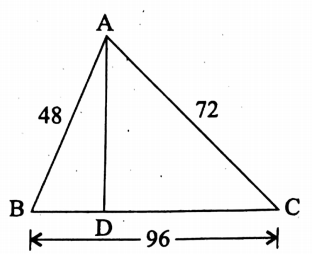
Question 5. If the perpendicular distances of the sides of an equilateral triangle from any point within the triangle be 10 cm, 12 cm, and 8 cm, then find the area of the triangle.
Solution:
Given
The perpendicular distances of the sides of an equilateral triangle from any point within the triangle be 10 cm, 12 cm, and 8 cm
Let OD, OE, and OF be the perpendicular distances of the sides BC, CA, and AB respectively of the equilateral triangle ABC from the point O within the ΔABC. Also, let the length of the sides of the ΔABC be a cm.
Now, the area of ΔABC= area of ΔOBC + area of ΔOCA + area of ΔOAB.
\(\Rightarrow \frac{\sqrt{3}}{4} a^2=\frac{1}{2} \mathrm{BC} \times \mathrm{OD}+\frac{1}{2} \mathrm{AC} \times \mathrm{OE}+\frac{1}{2} \mathrm{AB} \times \mathrm{OF}\)
\(\Rightarrow \frac{\sqrt{3}}{4} a^2=\frac{1}{2} \times a \times 10+\frac{1}{2} \times a \times 12+\frac{1}{2} a \times 8\)
\(\Rightarrow \frac{\sqrt{3}}{4} a^2=15 a \quad \Rightarrow a=\frac{60}{\sqrt{3}}=\frac{60 \sqrt{3}}{3}=20 \sqrt{3}\)
∴ area of the triangle ABC = \(\frac{\sqrt{3}}{4}(20 \sqrt{3})^2 \cdot \mathrm{sq}-\mathrm{cm}=\frac{\sqrt{3}}{4} \times 400 \times 3 \mathrm{sq}-\mathrm{cm}=300 \sqrt{3} \mathrm{sq}-\mathrm{cm}\)
the required area = 300√3 sq-cm
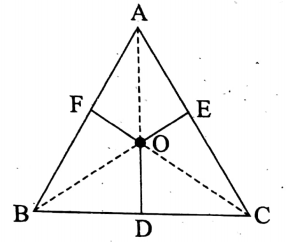
Question 6. If the perimeter of a right-angled isosceles triangle is (√2+1) cm, then find the length of its hypotenuse and also its area.
Solution:
Given
The perimeter of a right-angled isosceles triangle is (√2+1) cm
Let the length of each equal side adjacent to the right angle of the right-angled isosceles triangle be a cm.
∴ Length of the hypotenuse = \(\sqrt{a^2+a^2} \mathrm{~cm}=\sqrt{2} a \mathrm{~cm}\)
The perimeter is (√2+1) cm
:. a+a+ √2a = (√2+1)
\(\Rightarrow 2 a+\sqrt{2} a=(\sqrt{2}+1) \quad \Rightarrow \sqrt{2} a(\sqrt{2}+1)=(\sqrt{2}+1) \quad \Rightarrow a=\frac{1}{\sqrt{2}}\)
∴ Length of the hypotenuse = \(\sqrt{2} \cdot \frac{1}{\sqrt{2}} \mathrm{~cm}\) = 1 cm.
Area of f the triangle =\(\frac{1}{2} \times a \times a \mathrm{sq}-\mathrm{cm}=\frac{1}{2} a^2 \mathrm{sq}-\mathrm{cm}=\frac{1}{2} \times \frac{1}{2} \mathrm{sq}-\mathrm{cm}=\frac{1}{4} \mathrm{sq}-\mathrm{cm}\)
∴ the required length and area are 1 cm and \(\frac{1}{4}\) sq-cm respectively.
Question 7. If the length of the sides of an equilateral triangle is increased by 1 m each, then the area of the triangle increases by √3 sq-cm. Find the length of the side of the equilateral triangle.
Solution:
Given
The length of the sides of an equilateral triangle is increased by 1 m each, then the area of the triangle increases by √3 sq-cm
Let the length of the equal side of the equilateral triangle be a m.
∴ Area \(\frac{\sqrt{3}}{4} a^2 \mathrm{sq}-\mathrm{m}\)
The increased length of the sides = (a + 1) m.
Then, the area becomes = \(\frac{\sqrt{3}}{4}(a+1)^2 s \mathrm{sq}-\mathrm{m}\)
As per the question, \(\frac{\sqrt{3}}{4}(a+1)^2-\frac{\sqrt{3}}{4} a^2=\sqrt{3}\)
\(\frac{\sqrt{3}}{4}\left(a^2+2 a+1-a^2\right)=\sqrt{3} \Rightarrow 2 a+1=4 \Rightarrow a=\frac{3}{2} ⇒ 1 \cdot 5\)
∴ the required length of the side = 1.5 m.
Question 8. The ratio of the areas of an equilateral triangle and a square is √3:2. If the length of the diagonal of the square be 60 cm, find the perimeter of the equilateral triangle.
Solution:
Given
The ratio of the areas of an equilateral triangle and a square is √3:2
The length of the diagonal of the square be 60 cm
Let the length of the equilateral triangle be a cm and the length of the sides of the square be x cm.
As per the question,
\(\frac{\sqrt{3}}{4} a^2: x^2=\sqrt{3}: 2 \Rightarrow \frac{\sqrt{3} a^2}{4 x^2}=\frac{\sqrt{3}}{2} \Rightarrow \frac{a^2}{x^2}=\frac{2}{1} \Rightarrow a: x=\sqrt{2}: 1\)
Also, the length of the diagonal of the square is 60 cm.
∴ \(\sqrt{2} x=60 \Rightarrow x=\frac{60}{\sqrt{2}}=30 \sqrt{2} \quad ∴ \frac{a}{x}=\sqrt{2} \Rightarrow a=\sqrt{2} x \Rightarrow a=\sqrt{2} \times 30 \sqrt{2}=60\)
∴ perimeter of the triangle = 3a cm = 3 x 60 cm, = 180 cm.
∴ the required perimeter = 180 cm.
Word Problems on Area and Perimeter for Class 9
Question 9. The length of the hypotenuse of the right-angled triangle and its perimeter be 13 cm and 30 cm respectively. Find the area of the triangle.
Solution:
Given
The length of the hypotenuse of the right-angled triangle and its perimeter be 13 cm and 30 cm respectively
Let the two adjacent sides of the right angle of the right-angled triangle be a cm and b cm.
The given length of the hypotenuse is 13 cm.
∴ \(\sqrt{a^2+b^2}=13 \Rightarrow a^2+b^2=169\)
Also, perimeter = 30 cm,
∴ \(a+b+\sqrt{a^2+b^2}=30 \Rightarrow a+b+13=30 \Rightarrow a+b=17\)
\(\Rightarrow(a+b)^2=289 \quad \Rightarrow a^2+b^2+2 a b=289\)
\(\Rightarrow 169+2 a b=289 \quad \Rightarrow 2 a b=120 \quad \Rightarrow a b=60\)
Now, the area = \(\frac{1}{2}\) ab sq-cm
= \(\frac{1}{2}\) x 60 sq-cm
= 30 sq-cm
∴ the required area = 30 sq-cm.
Chapter 1 Perimeter And Area Of Triangles And Quadrilaterals Rectangle And Square
1.
- Area of a rectangle = Length x Breadth
∴ Length Area Breadth = Area ÷ Length.
If Length = units and Breadth = b units, then the area of the rectangle = ab sq-units.
- The perimeter of a rectangle = 2 (a + b) units.
- The diagonal of a rectangle
\(\sqrt{(\text { Length })^2+(\text { Breadth })^2}=\sqrt{a^2+b^2} \text { units }\)
2.
- Area of a square
We know that the length and breadth of a square are equal.
∴ Area of a square = Length x Breadth = (side)², i.e., either (Length)² or, (Breadth)².
∴ Side of a square = √Area
- The perimeter of a square = 4a units.
- Diagonal of a square = \(\sqrt{a^2+a^2}\) units = a√2 units
- Area of a square x (diagonal)² sq-units.
3.
- Area of four walls of a room
A room is usually either rectangular or square.
In a rectangular room, the two walls along the length are equal, and also along the breadth, the two opposite walls are equal.
- Along the length of the wall is a rectangle, the length of which is equal to the length of the room and the breadth is the height, of the room.
- ∴ Area of that two walls = 2 x length x height.
- Similarly, the two walls along the breadth are also two rectangles, the length of which is the breadth of the room and the breadth is the height of the room.
- Area of that two walls = 2 x breadth x height
- If h is the height of the room, then the area of the four walls = 2 (length x breadth) x height
= perimeter x height
= 2 (a + b) h sq-units.
Chapter 1 Perimeter And Area Of Triangles Select The Correct Answer (MCQ)
Question 1. The length of the diagonal of a square is 12√2 cm. Then the area of the square is
- 288 sq-cm
- 144 sq-cm
- 72 sq-cm
- 18 sq-cm
Solution:
If the sides of the square be a cm, the diagonal is √2a
:. √2a = 12√2
⇒ a² = 144
∴ Area of the square = 144 sq-cm.
Question 2. If the area of a square is \(\mathbf{A}_1\), sq-units and the area of the square drawn on the diagonal of the previous square be \(\mathbf{A}_1: \mathbf{A}_2\)
- 1:2
- 2:1
- 1:4
- 4:1
Solution: Let the side of the first square be a unit.
∴ \(\mathrm{A}_1=a^2 \text { sq-units }\)
Again, the diagonal of the first square=√2a units.
∴ \(\mathrm{A}_2=(\sqrt{2} a)^2 \quad \Rightarrow \mathrm{A}_2=2 a^2 \text { sq-units. }\)
∴ \(\mathrm{A}_1: \mathrm{A}_2=a^2: 2 a^2=\frac{a^2}{2 a^2}=1: 2\)
Question 3. The diagonal of a rectangle is 10 cm and the area is 62.5 sq-cm. Then the sum of its length and breadth is
- 12 cm
- 15 cm
- 20 cm
- 25 cm
Solution:
Let the length and breadth of the rectangle be a cm and b cm respectively.
∴ \(\sqrt{a^2+b^2}=10\)
a²+b² = 100 and ab = 62.5
(a+b)² = a²+b²+2ab
= 100+ 2 x 62.5
= 100+125 = 225
∴ a+b = √225
= 15
∴ the required sum = 15 cm.
Question 4. The ratio of the diagonals of two squares is 5: 2. Then the ratio of their areas is
- 5:2
- 2:5
- 4: 25
- 25: 4
Solution:
Let the diagonals of the squares be 5x and 2x.
If the sides of the squares be a and b, then
\(\sqrt{2} a=5 x \Rightarrow a=\frac{5 x}{\sqrt{2}} \quad \text { and } \quad \sqrt{2} b=2 x \Rightarrow b=\frac{2 x}{\sqrt{2}}\)
∴ The ratio of the areas \(a^2: b^2=\left(\frac{5 x}{\sqrt{2}}\right)^2:\left(\frac{2 x}{\sqrt{2}}\right)^2=\frac{25 x^2}{2}: \frac{4 x^2}{2}=\frac{25}{4}=25: 4\)
Chapter 1 Perimeter And Area Of Triangles Short Answer Type Questions
Question 1. If the sides of a square be increased by 10%, then how much percentage of its area will be increased?
Solution:
Given
The sides of a square be increased by 10%.
Let the side of the square be a unit.
∴ area = a² sq-units.
If the side is increased by 10%, then it will be
\(\left(a+a \times \frac{10}{100}\right) \text { units }=\left(a+\frac{a}{10}\right) \text { units }=\frac{11 a}{10} \text { units }\)
∴ \(\text { area }=\left(\frac{11 a}{10}\right)^2 \text { sq-units }=\frac{121 a^2}{100} \text { sq-units }\)
∴ Percentage of area increased = \(\frac{\frac{121 a^2}{100}-a^2}{a^2} \times 100 \%=\frac{\frac{21 a^2}{100}}{a^2} \times 100 \%=21 \%\)
∴ the required percentage = 21%.
Question 2. If the length of a rectangle is increased by 10% and its breadth is decreased by 10%, then find its percentage of increased or decreased area.
Solution:
Given
The length of a rectangle is increased by 10% and its breadth is decreased by 10%.
Let the length of the rectangle be a unit and the breadth be b units.
∴ are ab sq-units.
Now, increased = \(\left(a+a \times \frac{10}{100}\right) \text { units }=\left(a+\frac{a}{10}\right) \text { units }=\frac{11 a}{10} \text { units }\)
Again, decreased breadth = \(\left(b-b \times \frac{10}{100}\right) \text { units }=\left(b-\frac{b}{10}\right) \text { units }=\frac{9 b}{10} \text { units }\)
∴ now area \(\frac{11 a}{10} \times \frac{9 b}{10} \text { sq-units }=\frac{99 a b}{100} \text { sq-units }\)
∴ are decreased = \(\left(a b-\frac{99 a b}{100}\right) \text { sq-units }=\frac{a b}{100} \text { sq-units }\)
∴ percentage of decreased area = \(\frac{\frac{a b}{100}}{a b} \times 100 \%=1 \%\)
∴ the required percentage = 1% decrease.
Question 3. The diagonal of a rectangle is 5 cm. The length of the perpendicular drawn to one of the breadth of the rectangle from the point of intersection of its diagonal is 2 cm. Find the breadth of the rectangle.
Solution:
Given
The diagonal of a rectangle is 5 cm.
The length of the perpendicular drawn to one of the breadth of the rectangle from the point of intersection of its diagonal is 2 cm.
Let O be the point of intersection of the diagonals AC and BD of the rectangle ABCD and let OP be the perpendicular drawn from O to BC.
Since O is the mid-point of AC and OP || AB
∴ AB = 2 OP
AB = 2 x 2 cm = 4 cm
∴ the length of the rectangle is 4 cm. Let the breadth of the rectangle be x cm.
∴ x² + (4)² = (5)²
x² = 25 – 16
x² = 9
⇒ x= 3
∴ The breadth of the rectangle is 3 cm.
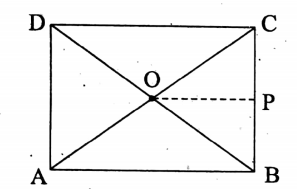
Visualizing Area and Perimeter with Diagrams
Question 4. The diagonal of a square is 4√2 cm. Find the length of the diagonal of the square whose area is double of the first square.
Solution:
Given
The diagonal of a square is 4√2 cm..
Let the side of the given square be a cm.
∴ length of its diagonal As per the question, √2a = 4√2
⇒ a² = 16
area of the given square is 16 sq-units.
the area of the required square = 2 x 16 sq-units
= 32 sq-units.
Now, if the side of the required square is b cm, then b² = 32.
∴ b = √32 = 4√2
∴ length of the diagonal = √2 × 4√2 cm
= 8 cm.
∴ the required diagonal = 8 cm.
Chapter 1 Perimeter And Area Of Triangles Long Answer Type Questions
Question 1. The area of rectangular land is 500 sqm. The length of the land if decreased by 3 m and its breadth if increased by 2 m, then it becomes a square. Find the length and breadth of the land.
Solution:
Given
The area of rectangular land is 500 sqm.
The length of the land if decreased by 3 m and its breadth if increased by 2 m, then it becomes a square.
Let the length of the land be x m and the breadth be y m.
As per question, xy= 500 and x – 3 = y + 2 x – y = 5……………...(1)
⇒(x-y)² = 25 (x + y)² – 4xy = 25(x+y)²
= 25+2000 [4xy = 4 x 500 = 2000]
⇒ x + y = √2025
⇒ x+y = 45…………..(2)
Adding (1) and (2) we get, 2x = 50
x = 25
∴ y = 45 – x
= 45 – 25
= 20
The required length is 25 m and the breadth = is 20 m.
Question 2. The side of a square land is 300 m. There is a wall of the same height around the square land of breadth 3 dcm. At a rate of Rs. 5000 per 100 sqm, what will be the expenditure to build a wall on the land?
Solution:
Given
The side of a square land is 300 m.
There is a wall of the same height around the square land of breadth 3 dcm.
At a rate of Rs. 5000 per 100 sqm.
The side of the square is 300 m.
∴ area = (300)² sq-cm.
Length of the land including the wall = (300+ 0.3 +0.3) m = 300.6 m
∴ then its area = (300.6)² sqm.
∴ Area of the wall = (300.6)² – (300)² sqm = (300.6 + 300) x (300.6-300) sqm
= (600.6 x 0.6) sq-m = 360-36 sq-m
Now, for 100 sqm the expenditure = Rs. 5000
for 1 sqm the expenditure = Rs. \(\frac{5000}{100}\)
for 360.36 sqm the expenditure = \(\text { Rs. } \frac{5000 \times 360 \cdot 36}{100}\)
∴ the required expenditure = Rs. 18018.
Question 3. If the length of a rectangular land of area 1200 sq-cm is 40 cm, then find the area of the square drawn on the diagonal of the rectangular land.
Solution:
Given
The length of a rectangular land of area 1200 sq-cm is 40 cm.
Length of the land = 40 cm and area = 1200 sq-cm
∴ breadth = \(\frac{1200}{40}\)
∴ diagonal = \(\sqrt{40^2+30^2} \mathrm{~cm}=\sqrt{1600+900} \mathrm{~cm}\)
= √2500 cm
= 50 cm
∴ the required area (50)² sq-cm = 2500 sq-cm
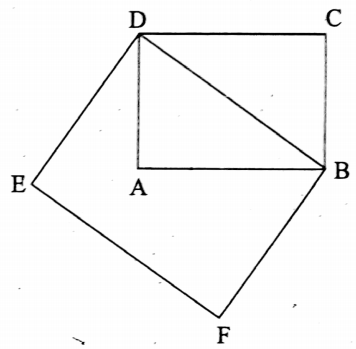
Question 4. The area of four walls of a room is 42 sq-cm. If the area of the ground of the room is 12 sqm and its length is 4 m, then find the height of the wall.
Solution
Given
The area of four walls of a room is 42 sq-cm.
The area of the ground of the room is 12 sqm and its length is 4 m.
The area of the ground= is 12 sqm and the length
= 4 m
∴ breadth = \(\frac{12}{4}\) m
= 3 m.
Area of four walls = 42 sqm.
∴ 2 x (length + breadth) x height = 42
⇒ 2 × (4 + 3) x height = 42
Height = \(\frac{42}{14}\) = 3
∴ the required height = 3 m.
Question 5. Sujata wants to draw a picture on a rectangular paper of an area of 84 sq-cm. If the difference between the length and breadth of the paper is 5 cm, find the perimeter of the rectangular paper.
Solution:
Given
Sujata wants to draw a picture on a rectangular paper of an area of 84 sq-cm.
The difference between the length and breadth of the paper is 5 cm.
Let the length and breadth of the paper be x cm and y cm.
Area of the paper = 84 sq-cm
Xy = 84 As per the question, x-y = 5
∴ (x + y)² = (x − y)² + 4xy
= 52 + 4 x 84
= 25 + 336 = 361
∴ x + y = √361
∴ 2(x+y) = 2 x 19
= 38
∴ the required perimeter = 38 cm.
Question 6. How many meters of walls should be needed to round the square land of which the length of the diagonal is 20√2 m? At a rate of Rs. 20 per sq-m, what will be the expenditure for grass the land?
Solution:
The diagonal of the square = 20√2 m
∴ side x √2 = 20√2 sides = 20 m.
∴ perimeter of the square = 4 x a [ a = side ] = 4 x 20 m = 80 m.
∴ The length of the required wall is 80 m.
Area of the land = 20 x 20 sq-m = 400 sq-m
At a rate of Rs. 20 per sq-m. the required expenditure = Rs. (400 x 20) = Rs. 8000.
Question 7. The ratio of the length and breadth of the hall-room of Moushumi is 9: 5 and its perimeter is 140 m. Moushumi wants to fit a tally of rectangular sizes 25 cm x 20 cm into the hall room. Then what will be the expenditure of doing this at a rate of Rs. 500 per 100 tally?
Solution:
Given
The ratio of the length and breadth of the hall-room of Moushumi is 9: 5 and its perimeter is 140 m.
Moushumi wants to fit a tally of rectangular sizes 25 cm x 20 cm into the hall room.
The ratio of the length and the breadth of the hall room is 9:5.
Let length = 9x m and breadth = 5x m
∴ perimeter = 2 (length + breadth) = 2 (9x + 5x) m = 28x m
As per the question, 28x = 140
x = 5
∴ Length of the hall-room = 9 x 5 m = 45 m
and breadth = 5 x 5 m = 25 m
∴ Area of the hall-room = length x breadth = (45 x 25) sq-cm
= 1125 sq-m
= 11250000 sq-cm
Area of a single tally = (25 x 20) sq-cm
= 500 sq-cm
∴ required no. of tally = \(\frac{11250000}{500}\) = 22500
At a rate of Rs. 500 per 100 tallies, the required expenditure = \(\text { Rs. } \frac{500 \times 22500}{100}\)
= Rs. 112500.
At a rate of Rs. 500 per 100 tallies, the required expenditure = Rs. 112500.
Question 8. The ratio of the length and breadth of a rectangular field is 4: 3. To round the field it needs to walk a way of 336 m. Find the area of the field.
Solution:
Given
The ratio of the length and breadth of a rectangular field is 4: 3.
To round the field it needs to walk a way of 336 m.
The ratio of length and breadth = 4:3.
Let length 4x m and breadth = 3x m.
∴ Perimeter = 2 (4x + 3x) m = 14x m.
As per the question, 14x= 336
⇒ x = \(\frac{336}{14}\)
⇒ x = 24
Length of the field = 4 x 24 m = 96 m and breadth = 3 x 24 m = 72 m
∴ Area of the field = length x breadth = (96 x 72) sq-cm = 6912 sqm
the required area = 6912 sq-m.
Question 9. The diagonal of a rectangular field is 15 m. The difference between its length and breadth is 3 m. Find the perimeter and area of the field.
Solution:
Given
The diagonal of a rectangular field is 15 m.
The difference between its length and breadth is 3 m.
The diagonal of the given field = 15 m.
Let its breadth = x m,
∴ length = (x + 3) m (by a question)
∴ diagonal = \(\sqrt{x^2+(x+3)^2} \mathrm{~m}\)
As per the question, \(\sqrt{x^2+(x+3)^2}=15 \Rightarrow x^2+(x+3)^2=225 \Rightarrow x^2+x^2+6 x+9=225\)
\(2 x^2+6 x-216=0 \Rightarrow x^2+3 x-108=0 \Rightarrow x^2+(12-9) x-108=0\)
\(x^2+12 x-9 x-108=0 \Rightarrow x(x+12)-9(x+12)=0 \Rightarrow(x+12)(x-9)=0\)
∴ either x + 12 = 0
x = –12
or, x -9=0
⇒ x=9.
But the value of x can never be negative,
∴ x = 9.
∴ breadth of the field = 9 m and length = (9+ 3) m = 12 m.
∴ Perimeter of the field = 2 (length + breadth) = 2 (12 + 9) m
= 42 m
Area of the field = length x breadth = 12 x 9 sqm
= 108 sqm.
∴ the required perimeter = is 42 m and the required area
= 108 sqm.
The required perimeter = 108 sqm.
Question 10. The length of a rectangle is 1 \(\frac{1}{2}\) part of its breadth. To plane it, it requires Rs. 1470 at a rate of Rs. \(\frac{5}{16}\) per sqm. To fench the rectangle at a rate of Rs. 4 per meter, find the expenditure.
Solution:
Given
The length of a rectangle is 1 \(\frac{1}{2}\) part of its breadth.
To plane it, it requires Rs. 1470 at a rate of Rs. \(\frac{5}{16}\) per sqm. To fench the rectangle at a rate of Rs. 4 per meter.
Area of the rectangle = \(\left(\text { Rs. } 1470 \div \text { Rs. } \frac{5}{16}\right) \text { sqm }\)
= \(\frac{1470 \times 16}{5} s q-m=294 \times 16 \mathrm{sq}-\mathrm{m}\)
i.e., length x breadth = 294 x 16 sq-m.
\(\frac{3}{2}\)breadth x breadth = 294 x 16 sqm [∵ Length = \(\frac{3}{2}\) x breadth]
⇒ (breadth)² = \(\frac{294 \times 16 \times 2}{3} \text { sqm }=196 \times 16 \text { sqm }\)
⇒ breadth = \(\sqrt{196 \times 16} \mathrm{~m}=(14 \times 4) \mathrm{m}=56 \mathrm{~m}\)
∴ Length = \(\left(56 \times \frac{3}{2}\right) \mathrm{m}=84 \mathrm{~m}\) m
= 84 m.
∴ Length of the fencing = perimeter of the rectangle
= 2 (84+ 56) m
= 2 x 140 m
= 280 m
∴ required expenditure= Rs. (4 x 280) = Rs. 1120.
Chapter 1 Perimeter And Area Of Triangles Quadrilaterals And Polygons
Parallelogram :
We know that the quadrilateral in which the opposite sides are parallel is known as a parallelogram.
The ABCD is a parallelogram of which AC is a diagonal and CL ⊥ AB.
∴ Area of the parallelogram
ABCD = 2 x (area of ΔABC) sq-units
= \(2 \times\left(\frac{1}{2} \times \mathrm{AB} \times \mathrm{CL}\right)\)
= (AB × CL) sq-units
= (base x height) sq-units
If the two adjacent sides of a parallelogram be a units and b units, then
1. Perimeter of the parallelogram = 2 (a + b) = 2 (sum of any two adjacent sides).
2. Area of the parallelogram = (Base x Height) sq-units.
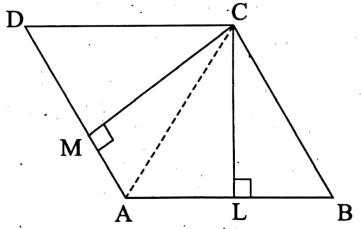
Rhombus :
We know that
1. the quadrilateral, four of whose sides are equal is known as a rhombus
2. the diagonals of a rhombus bisect each other orthogonally.
The AC and BD are the two diagonals of the rhombus ABCD, which intersect each other orthogonally at O.
Now, area of the rhombus ABCD= [(area of ΔABC) + (area of ΔADC)] sq-units
= \(\left[\left(\frac{1}{2} \times \mathrm{AC} \times \mathrm{BO}\right)+\left(\frac{1}{2} \times \mathrm{AC} \times \mathrm{OD}\right)\right] \text { sq-un }\)
= \(\frac{1}{2} \times \mathrm{AC}(\mathrm{BO}+\mathrm{OD}) \text { sq-units }=\frac{1}{2} \times \mathrm{AC} \times \mathrm{BD} \text { sq-units }\)
= \(\frac{1}{2} \times[(\text { first diagonal }) \times(\text { second diagonal })] \text { sq-units }\)
= \(\frac{1}{2} \times \text { (product of the diagonals) sq-uinits. }\)
Again, in the right-angled triangle COD,
CD² = OC² + OD² (by Pythagoras theorem)
= \(\left(\frac{1}{2} \mathrm{AC}\right)^2+\left(\frac{1}{2} \mathrm{BD}\right)^2=\frac{1}{4}\left(\mathrm{AC}^2+\mathrm{BD}^2\right)\)
∴ CD = \(\mathrm{CD}=\sqrt{\frac{1}{4}\left(\mathrm{AC}^2+\mathrm{BD}^2\right)}=\frac{1}{2} \sqrt{\mathrm{AC}^2+\mathrm{BD}^2}\)
= \(\frac{1}{2} \sqrt{(\text { first diagonal })^2+(\text { second diagonal })^2}\)
∴ if \(d_1 \text { and } d_2\) is the diagonals of a rhombus, then
1. Side of the rhombus = \(\frac{1}{2} \sqrt{d_1^2+d_2^2} \text { units }\).
2. Perimeter of the rhombus = \(4 \times(\text { side })=2 \sqrt{d_1^2+d_2^2}\)
3. Area of the rhombus = (Base) x (Height) square units
4. Area of the rhombus = \(\frac{1}{2} \times d_1 \times d_2 \text { sq-units }\)
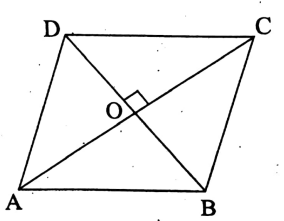
Trapezium :
We know that the quadrilateral only two of whose opposite sides are parallel is known as a trapezium.
The perpendicular distance between the two parallel sides is called the height of the trapezium.
In the, ABCD is a trapezium of which AB || DC and AC is a diagonal.
Let us draw CF ⊥ AB and AE ⊥ produced CD.
Area of the trapezium ABCD = [(area of ΔADC) + (area of ΔABC) sq-units.
= \(\left(\frac{1}{2} \times \mathrm{DC} \times \mathrm{AE}+\frac{1}{2} \times \mathrm{AB} \times \mathrm{CF}\right) \text { sq-units }=\left(\frac{1}{2} \times \mathrm{DC} \times \mathrm{CF}+\frac{1}{2} \times \mathrm{AB} \times \mathrm{CF}\right) \text { sq-units }\)
= \(\frac{1}{2} \times \mathrm{CF} \times(\mathrm{DC}+\mathrm{AB}) \text { sq-units }\)
= \(\frac{1}{2}\) (perpendicular distance of the parallel sides) x ( sum of the parallel sides) sq. units.
∴ If the two parallel sides of a trapezium be a units and b units and the height be h units, then
Area of the trapezium = \(\frac{1}{2}\) (a+b) xh sq-units.
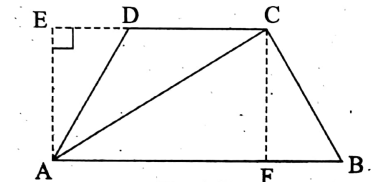
Quadrilateral :
We know that the plane region closed by four straight lines is known as a quadrilateral.
In, ABCD is a quadrilateral of which AC is a diagonal.
BL ⊥ AC and DM ⊥ AC are drawn.
∴ area of ABCD = [(area of ΔABC) + (area of ΔADC)] sq-units
= \(=\left[\left(\frac{1}{2} \times \mathrm{AC} \times \mathrm{BL}\right)+\left(\frac{1}{2} \times \mathrm{AC} \times \mathrm{DM}\right)\right] \text { sq-units }\)
= \(\frac{1}{2} \times \mathrm{AC} \times(\mathrm{BL}+\mathrm{DM}) \text { sq-units }\)
= \(\frac{1}{2}\) x (length of one diagonal) x (sum of the perpendiculars drawn from two opposite vertices to that diagonal) sq-units.
∴ If the lengths of the perpendiculars drawn from B and D of the quadrilateral ABCD to the diagonal AC be h, and h2 units respectively, then
The area of ABCD = \(\frac{1}{2}\) x AC x \(\left(h_1+h_2\right)\) sq-units.
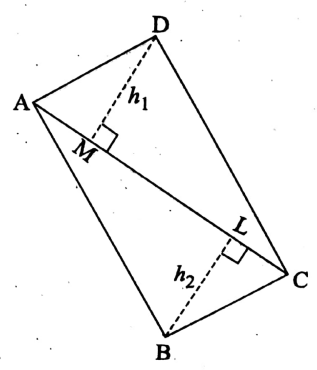
Chapter 1 Perimeter And Area Of Triangles Select The Correct Answer (MCQ)
Question 1. The height of a parallelogram is one-third of its base. If the area of the parallelogram is 192 sq-cm, then its height is
- 4 cm
- 8 cm
- 16 cm
- 24 cm
Solution:
Let the height of the parallelogram be a cm (a > 0). the base is 3a cm.
∴ Area = base x height = (3a x a) sq-cm = 3a² sq-cm.
As per the question, \(3 a^2=192 \Rightarrow a^2=\frac{192}{2}=64 \Rightarrow a=8\)
∴ The required height = 8 cm.
Question 2. The length of each side of a rhombus is 6 cm and one of its angles is 60°. Then its area is
- 9√3 sq-cm
- 18√3 sq-cm
- 36√3 sq-em
- 6√3 sq-em
Solution:
Let in rhombus PQRS, PQ = QR = RS = SP = 6 cm and ∠PQR = 60°
Now, in ΔPQR, PQ = QR
∴ ∠QPR = ∠QRP [∵ Opposite angles of equal sides of a triangle are equal]
Again, in ΔPQR, ∠QPR + ∠PRQ + ∠RQP = 180°
∠QPR + ∠QPR + 60° = 180°
⇒ 2 ∠QPR = 120° ⇒ ∠QPR = 60°
∴ <QPR = <QRP = ∠PQR = 60°.
∴ ΔPQR is an equilateral triangle of sides 6 cm [∵ PQ QR = RP = 6 cm. ]
∴ Area of ΔPQR= \(\frac{\sqrt{3}}{4} \times(\text { side })^2=\frac{\sqrt{3}}{4} \times 6^2 \mathrm{sq}-\mathrm{cm}=\frac{\sqrt{3}}{4} \times 36 \mathrm{sq}-\mathrm{cm}=9 \sqrt{3} \mathrm{sq}-\mathrm{cm}\)
∴ The area of the rhombus PQRS = 2 x ΔPQR
= 2 x 9√3 sq-cm
= 18√3 sq-cm.
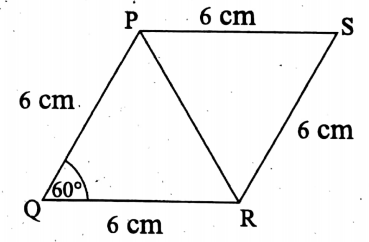
The area of the rhombus PQRS = 18√3 sq-cm.
Question 3. The length of a diagonal of a rhombus is thrice of its other diagonal. If the area of the rhombus is 96 sq-cm, then the length of the greater diagonal is
- 8 cm
- 12 cm
- 16 cm
- 24 cm
Solution:
Let the diagonals of the rhombus be a cm and 3a cm (a > 0).
∴ Area of the rhombus = \(\frac{1}{2}\) x product of the diagonals product of the diagonals
= \(\left(\frac{1}{2} \times a \times 3 a\right) \text { sq-cm }\)
= \(\frac{3 a^2}{2} \mathrm{sq}-\mathrm{cm}\)
As per the question, \(\frac{3 a^2}{2}=96 \Rightarrow 3 a^2=192 \Rightarrow a^2=64 \Rightarrow a=8\)
∴ The length of the greater diagonal (3 x 8) cm = 24 cm.
Question 4. A rhombus and a square lie on the same base. The area of the square is x2 sq-units and the area of the rhombus is y-units, then
- y > x²
- y < x²
- y = x²
- x <y²
Solution:
The rhombus EBCF and the square ABCD lie on the same base BC.
Let the side EF of EBCF intersect the side CD of ABCD at Q.
∴ Area of the square ABCD = BC x DC = x² sq-units.
∴ Area of the rhombus EBCF = BC x CQ=y sq-units
Now, BC x CQ < BC x DC [∵ CQ < DC]
∴ y < x²
Chapter 1 Perimeter And Area Of Triangles Short Answer Type Questions
Question 1. The area of the parallelogram ABCD is 96 sq-cm and the length of the diagonal BD is 12 cm. Find the perpendicular distance of the diagonal BD from point A.
Solution:
Given
The area of the parallelogram ABCD is 96 sq-cm and the length of the diagonal BD is 12 cm.
The area of the parallelogram ABCD is 96 sq-cm and the length of the diagonal BD is 12 cm.
AS is the perpendicular distance f the diagonal BD from A.
Let AS h cm (h > 0).
Now, ΔABD = \(\frac{1}{2}\)  ABCD
ABCD
=\(\left(\frac{1}{2} \times 96\right) \mathrm{sq}-\mathrm{cm}=48 \mathrm{sq}-\mathrm{cm}\)
Again, ΔABD = \(\frac{1}{2}\) × BD X AS
= \(\left(\frac{1}{2} \times 12 \times h\right) \mathrm{sq}-\mathrm{cm}=6 h \mathrm{sq}-\mathrm{cm}\)
As per the question, 6h = 48
h = 8.
∴ the required length = 8 cm.
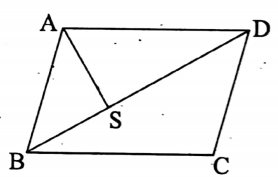
Question 2. The lengths of two adjacent sides of a parallelogram are 5 cm and 3 cm. If the perpendicular distance of the greatest sides of the parallelogram is 2 cm, then find the perpendicular distance between its smallest sides.
Solution:
Given
The lengths of two adjacent sides of a parallelogram are 5 cm and 3 cm.
the perpendicular distance of the greatest sides of the parallelogram is 2 cm.
The length of the greatest sides is 5 cm and the perpendicular distance between them is 2 cm.
∴ Area of the parallelogram = 5 x 2 sq-cm = 10 sq-cm.
Let the perpendicular distance between the smallest sides be x cm.
∴ 3 x x = 10
\(\Rightarrow x=\frac{10}{3}=3 \frac{1}{3} \mathrm{~cm}\)
∴ The required distance = 3 \(\frac{1}{3}\) cm.
Question 3. The height of a rhombus is 14 cm and the length of its sides is 5 cm. Find the area of the rhombus.
Solution
Given
The height of a rhombus is 14 cm and the length of its sides is 5 cm.
Area of the rhombus = side of rhombus x height
= 5 x 14 sq-cm
= 70 sq-cm.
∴ The required area = 70 sq-cm.
Question 4. The angle along any of the two adjacent parallel sides of an isosceles trapezium is 45°. If the length of its slant sides is 62 cm, then find the perpendicular distance between its parallel sides.
Solution:
Given
The angle along any of the two adjacent parallel sides of an isosceles trapezium is 45°.
The length of its slant sides is 62 cm.
Let in the isosceles trapezium ABCD.
AB = DC = 62 cm and ∠ABC= 45°.
Perpendicular AP is drawn from A to BC, which is the height of the trapezium w.r.t. the side BC.
Now, in ΔAPB, ∠APB = 90°, ∠ABP = 45°
∠BAP = 180° – ∠APB – ∠ABP
= 180° – 90° – 45°
= 45°
in ΔAPB, ∠ABP = ∠BAP.
∴ AP = BP
Again, in ΔAPB, ∠APB = 90°.
AP² + BP² = AB² [ by Pythagoras theorem ]
∴ AP²+ AP² = AB² [∵ AP = BP]
⇒ 2AP² = AB
⇒ \(\mathrm{AP}^2=\frac{\mathrm{AB}^2}{2} \Rightarrow \mathrm{AP}=\frac{\mathrm{AB}}{\sqrt{2}}=\frac{1}{\sqrt{2}} \times 62 \mathrm{~cm}=31 \sqrt{2} \mathrm{~cm}\)
∴ The required perpendicular distance = 31√2 cm.
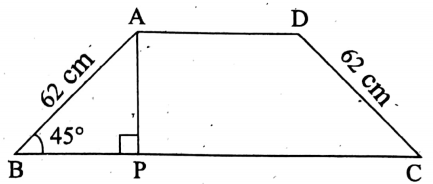
Chapter 1 Perimeter And Area Of Triangles Long Answer Type Questions
Question 1. Two adjacent sides of a field of shape parallelogram are 15 m and 13 m. If one of the diagonals of the field is 14 m, find its area.
Solution:
Given
Two adjacent sides of a field of shape parallelogram are 15 m and 13 m.
Let ABCD be the given parallelogram of which two adjacent sides AB and BC are of length 15 m and 13 m respectively and the length of the diagonal AC is 14 m.
∴ Half-perimeter of ΔABC = \(\frac{15+14+13}{2} \mathrm{~m}=\frac{42}{2} \mathrm{~m}=21 \mathrm{~m}\)
= \(\sqrt{21(21-15)(21-14)(21-13)} \mathrm{sq}-\mathrm{cm}\)
= \(\sqrt{21 \times 6 \times 7 \times 8} \text { sq-cm }\)
= \(\sqrt{3 \times 7 \times 2 \times 3 \times 7 \times 2 \times 2 \times 2} \text { sq-cm }\)
= 3 x 7 x 2 x 2 sq-cm
= 84 sq-cm
∴ area of  ABCD = 2 x area of ΔABC
ABCD = 2 x area of ΔABC
= 2 x 84 sqm
= 168 sqm.
∴ The required area = 168 sqm.
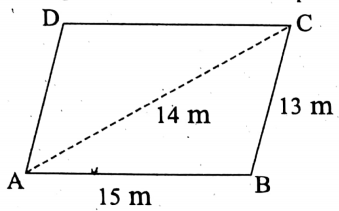
Question 2. Two adjacent sides of a parallelogram are 25 cm and 15 cm and the length of a diagonal is 20 cm. What will be the height of the parallelogram when its base is the side of length 25 cm?
Solution:
Given
Two adjacent sides of a parallelogram are 25 cm and 15 cm and the length of a diagonal is 20 cm.
Let the two adjacent sides AB and BC of ABCD be 25 cm and 15 cm respectively and the length of its diagonal BD is 20 cm.
∴ Half-perimeter of ΔABD = \(\frac{25+15+20}{2} \mathrm{~cm}=\frac{60}{2} \mathrm{~cm}=30 \mathrm{~cm}\)
∴ Area of ΔABD = \(\sqrt{30(30-25)(30-15)(30-20)} \mathrm{sq}-\mathrm{cm}\)
= \(\sqrt{30 \times 5 \times 15 \times 10} \text { sq-cm }\)
= \(\sqrt{2 \times 3 \times 5 \times 5 \times 3 \times 5 \times 2 \times 5} \mathrm{sq}-\mathrm{cm}\)
= 2 x 3 x 5 x 5 sq-cm
= 150 sq-cm
Let the required height of ABCD on the base AB be DE.
∴ \(\frac{1}{2}\) x AB x DE = 150
⇒ \(\frac{1}{2}\) × 25 x DE
⇒ \(\mathrm{DE}=\frac{150 \times 2}{25}\)
⇒ DE = 12
∴ The required height = 12 cm.
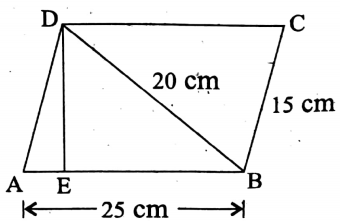
Question 3. Two adjacent sides of a parallelogram are 15 cm and 12 cm. If the perpendicular distance of the smallest sides of the parallelogram is 7.5 cm, then what is the perpendicular distance between its greatest sides?
Solution:
Given
Two adjacent sides of a parallelogram are 15 cm and 12 cm.
the perpendicular distance of the smallest sides of the parallelogram is 7.5 cm.
The distance between the smallest sides of the given parallelogram is 7.5 cm and the length of the smaller side is 12 cm.
∴ Area of the parallelogram = 12 x 7.5 sq-cm
= 90 sq-cm.
Let the perpendicular distance between the greatest sides be x cm.
∴ 15 x x = 90
⇒ x=6.
∴ The required length = 6 cm.
Question 4. The two diagonals of a rhombus are 15 cm and 20 cm. Find its perimeter, area, and height.
Solution:
Given
The two diagonals of a rhombus are 15 cm and 20 cm.
Let the diagonals AC and BD of the rhombus ABCD intersect each other at O.
Let AC 20 cm and BD = 15 cm.
∴ AO = \(\frac{\mathrm{AC}}{2}=\frac{20}{2} \mathrm{~cm}=10 \mathrm{~cm} \text { and } \mathrm{BO}=\frac{\mathrm{BD}}{2}=\frac{15}{2} \mathrm{~cm}=7 \cdot 5 \mathrm{~cm}\)
Since the diagonals of a rhombus bisect each other orthogonally,
∴ from the right-angled ΔAOB, we get,
\(\mathrm{AB}=\sqrt{\mathrm{AO}^2+\mathrm{OB}^2}=\sqrt{100+\frac{225}{4}} \mathrm{~cm}=\sqrt{\frac{625}{4}} \mathrm{~cm}=\frac{25}{2} \mathrm{~cm}=12.5 \mathrm{~cm}\)
∴ Perimeter of the rhombus = \(4 \times \frac{25}{2} \mathrm{~cm}\)
∴ Area of the rhombus = \(\frac{1}{2} \times 15 \times 20\)
Let the height of the rhombus be x cm.
∴ \(\frac{25}{2} \times x=150\)
x = 12.
∴ Perimeter = 50 cm, Area 150 sq. cm, and Height = 12 cm
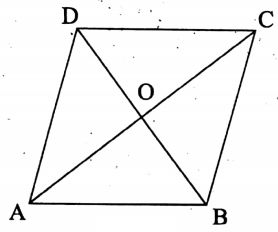
Question 5. The perimeter of a rhombus is 440 m and the perpendicular distance between its two parallel sides is 22 m. Then find the area of the rhombus.
Solution
Given
The perimeter of a rhombus is 440 m and the perpendicular distance between its two parallel sides is 22 m
Perimeter of the given rhombus = 440 m,
∴ 4 x side = 440
Side = \(\frac{440}{4}\) m = 110 m.
∴ Area of the rhombus = side x perpendicular distance
= 110 x 22 sqm
= 2420 sqm.
The area of the rhombus = 2420 sqm.
Question 6. If the perimeter of a rhombus is 20 cm and the length of one of its diagonal is 6 cm, then find the area of the rhombus.
Solution:
Given
The perimeter of a rhombus is 20 cm and the length of one of its diagonal is 6 cm
Let the perimeter of the rhombus ABCD is 20 cm.
∴ 4 x AB = 20 cm
⇒ AB = 5 cm
Let the length of the diagonal BD is 6 cm and BD and AC intersect at O.
∴ BO = \(\frac{\mathrm{BD}}{2}=\frac{6}{2} \mathrm{~cm}=3 \mathrm{~cm}\)
∴ ∠AOB = 90°
∴ AO = \(\sqrt{\mathrm{AB}^2-\mathrm{BO}^2}=\sqrt{5^2-3^2}=\sqrt{25-9}=\sqrt{16}=4\)
∴ AO = 4 cm
∴ AC = 2 x 4 cm
= 8 cm
∴ Area of the rhombus = \(\frac{1}{2}\) x 6 x 8 sq-cm
= 24 sq-cm
∴ The required area = 24 sq-cm.
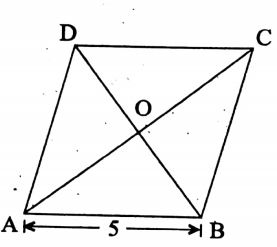
Question 7. The area of a trapezium is 1400 sq-decametre. The perpendicular distance between its parallel sides is 20 decametres and the ratio of the lengths of the parallel sides is 3: 4. Find the lengths of the sides.
Solution:
Given
The area of a trapezium is 1400 sq-decametre.
The perpendicular distance between its parallel sides is 20 decametres and the ratio of the lengths of the parallel sides is 3: 4.
Let the parallel sides be 3x decametre and 4x decametre.
The area of the trapezium is 1400 sq-decametres and the perpendicular distance between the parallel sides is 20 decametres.
∴ \(\frac{1}{2}\) x (3x + 4x) x 20 = 1400
⇒ 7x = 140
⇒ x = 20
∴ Length of the sides are 3x decametres = 3 x 20 decametres
= 60 decametres.
and 4x decametres = 4 x 20 decametres
= 80 decametres.
∴ The required lengths are 60 decametres and 80 decametres.
Question 8. The length of the diagonal BD of the trapezium ABCD is 11 cm and the lengths of two perpendiculars from A and C to the diagonal BD are 5 cm and 11 cm. Find the area of the trapezium ABCD.
Solution:
Given
The length of the diagonal BD of the trapezium ABCD is 11 cm and the lengths of two perpendiculars from A and C to the diagonal BD are 5 cm and 11 cm
Let the length of the diagonal BD of the given trapezium ABCD be 11 cm and the lengths of the perpendiculars AP and CQ drawn from A and C respectively to BD.
Given that AP = 5 cm and CQ = 11 cm.
∴ Area of ΔABD =\(\frac{1}{2} \times \text { base } \times \text { height }=\frac{1}{2} \times \mathrm{BD} \times \mathrm{AP}=\frac{1}{2} \times 11 \times 5 \mathrm{sq}-\mathrm{cm}=27.5 \mathrm{sq}-\mathrm{cm}\)
= \(\frac{1}{2}\) x 11 x 5 sq-cm
= 27.5 sq-cm
∴ Again, area of ΔBCD = \(\frac{1}{2} \times \text { base } \times \text { height }\)
= \(\frac{1}{2} \times \mathrm{BD} \times \mathrm{CQ}=\frac{1}{2} \times 11 \times 11 \mathrm{sq}-\mathrm{cm}=60 \cdot 5 \mathrm{sq}-\mathrm{cm}\)
∴ Area of the trapezium ABCD = area of ΔABD + area of ΔBCD
= (27.5+ 60.5) sq-cm
= 88.0 sq-cm
The required area = 88 sq-cm.
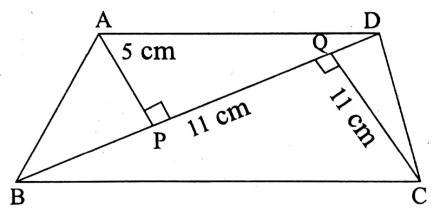
Question 9. The area of a rhombus is 2016 sq-cm and the length of each of the sides is 65 cm. Then find the lengths of its diagonals.
Solution:
Given
The area of a rhombus is 2016 sq-cm and the length of each of the sides is 65 cm
Let the lengths of the diagonals of the rhombus be x cm and y cm.
By the first condition given, \(\frac{1}{2} \times x \times y=2016 \Rightarrow x y=4032\) ……………….(1)
By the second condition given, \(\frac{1}{2} \sqrt{x^2+y^2}=65 \Rightarrow \sqrt{x^2+y^2}=130\)
x²+ y² = 16900 …………….(2)
We have, (x + y)² = x² + y² + 2xy = 16900 + 2 x 4032 = 16900 + 8064 = 24964
∴ x + y = 158…………..(3)
Again, (x – y)² = x² + y² -2xy
⇒ (x – y)² = 16900-8064
= 8836
∴ x – y = 94 …………………..(4)
Solving (3) and (4) we get, x= 126, y = 32
∴ the required lengths of the diagonals are 126 cm and 32 cm.
Question 10. The sides of a rhombus and a square are equal and the length of the diagonal of the square is 40√2 cm. If the ratio of the diagonals of the rhombus is 3: 4, then find the area of the rhombus.
Solution:
Given
The sides of a rhombus and a square are equal and the length of the diagonal of the square is 40√2 cm
The ratio of the diagonals of the rhombus is 3: 4
Let the side of the square be a cm.
the length of the diagonal a√2 cm,
∴ a√2 = 40√2
⇒ a = 40
∴ Let the lengths of the diagonals BD and AC be 3x cm and 4x cm.
∴ \(\mathrm{AO}=\frac{4 x}{2} \mathrm{~cm}=2 x \mathrm{~cm} \text { and } \mathrm{BO}=\frac{3 x}{2} \mathrm{~cm}\)
∴ AO² + BO² = AB²
or, \(4 x^2+\frac{9 x^2}{4}=40^2 \Rightarrow \frac{25 x^2}{4}=1600 \Rightarrow x=16\)
∴ The lengths of the diagonals 3 x 16 cm = 48 cm and
4 x 16 cm = 64 cm.
∴ Area of rhombus = \(\frac{1}{2}\) x 48 x 64 sq-cm = 1536 sq-cm.
∴The required area = 1536 sq-cm.
